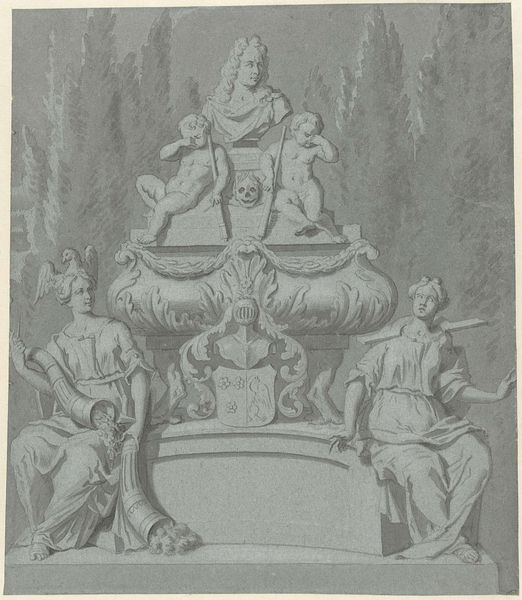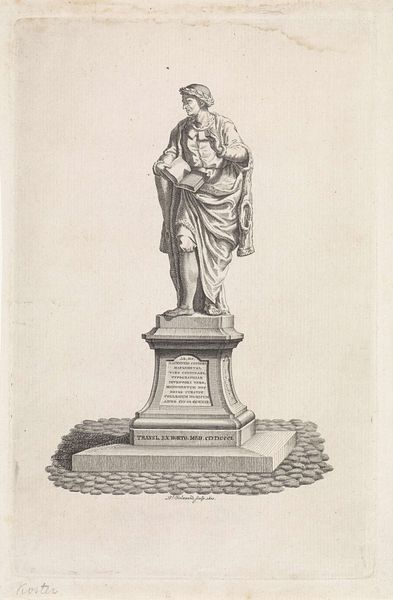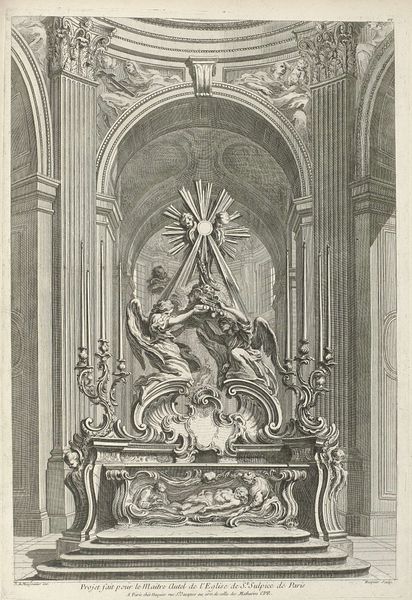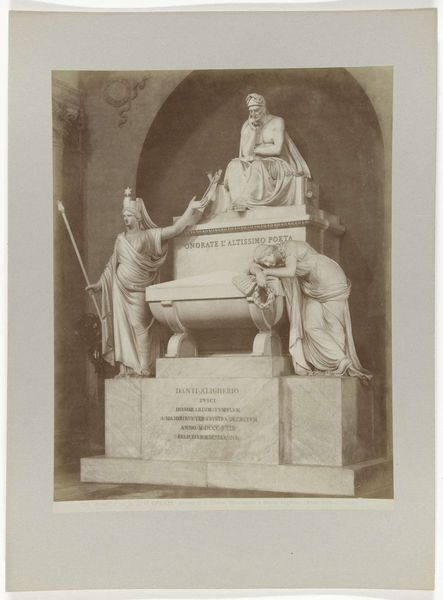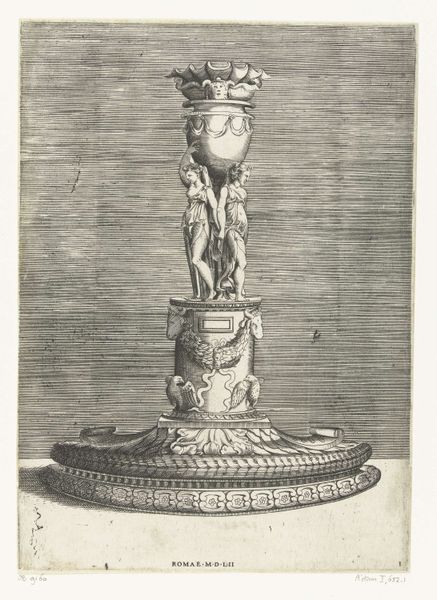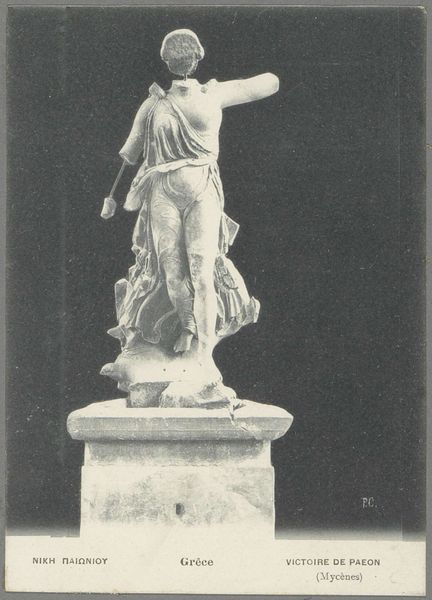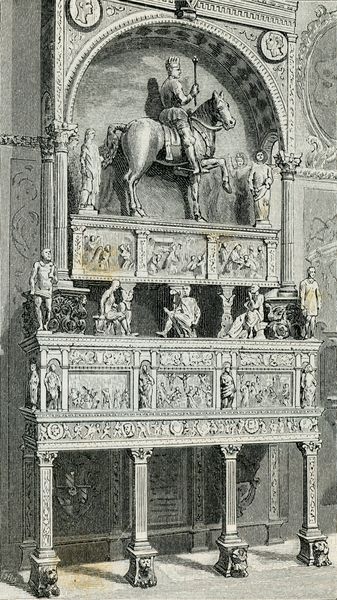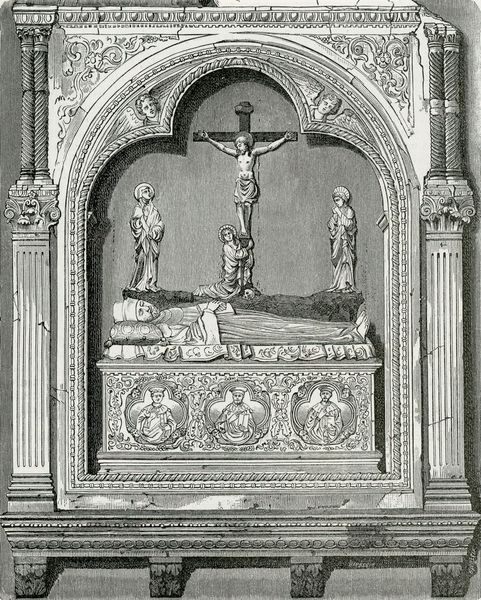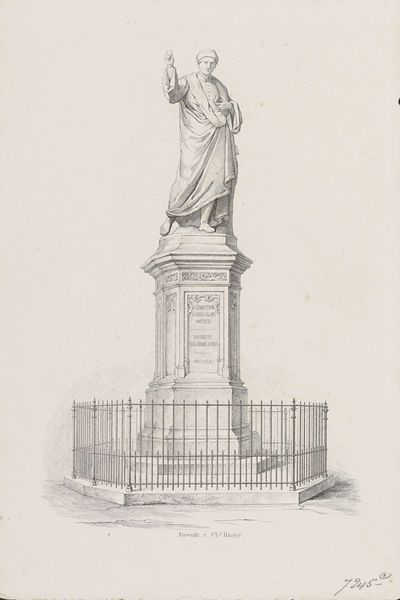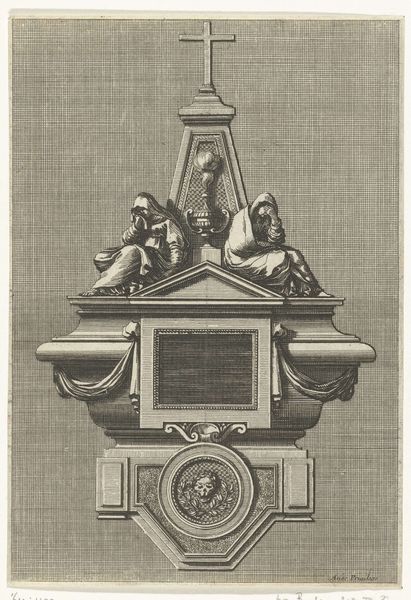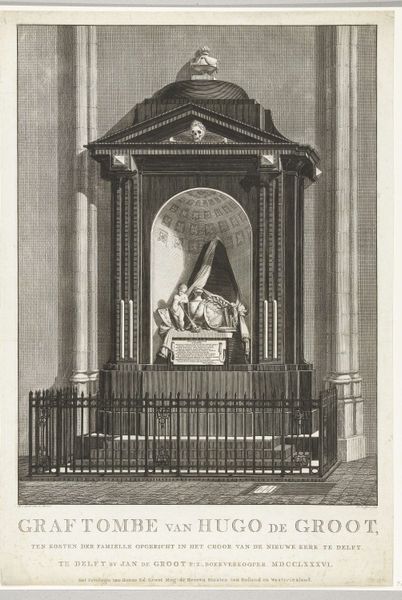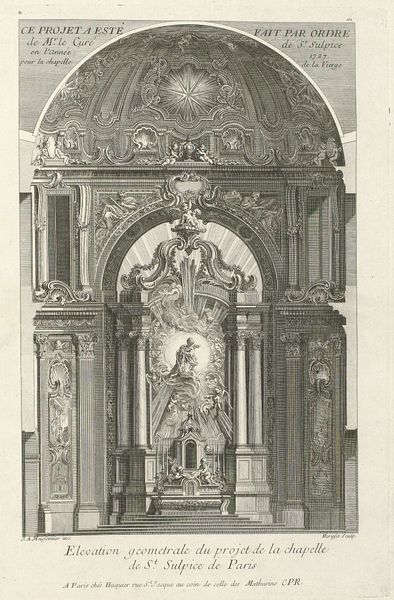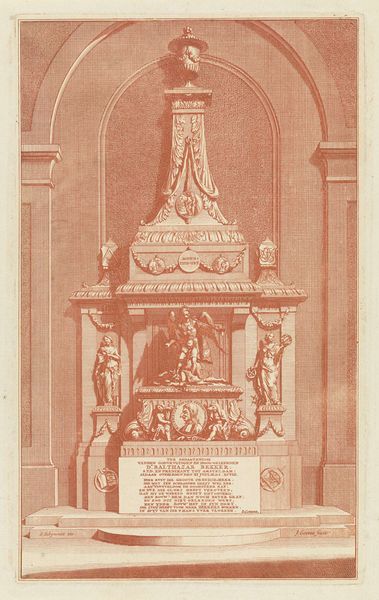
Copyright: Public domain
Editor: Here we have Giuseppe Barberis' "Camillo Cavour," from 1890. The print depicts what looks like a neoclassical sculpture. I’m struck by the allegorical figures, but I can’t quite piece together the narrative. How do you interpret this work? Curator: The entire monument acts as an emblem of civic virtue and national aspiration. See how the female figure kneels, offering a wreath? This is Italy herself, crowning Cavour, the statesman. The lion, of course, evokes Venice, but also fortitude. Do you see other repeating symbols here? Editor: I see some kind of writing on a stone tablet. And are those smaller sculptures at the base? Curator: Exactly! The inscription details Cavour's accomplishments. The lower sculptures depict scenes from his political life, reinforcing his role as the architect of a unified Italy. But look beyond the surface. What deeper themes are suggested here through these symbols? Editor: I guess it’s not just about remembering a historical figure, but also about building a national identity? The statue becomes a touchstone, solidifying certain values and ideals? Curator: Precisely. Each symbolic element contributes to a constructed memory. Even the choice of marble reinforces the idea of timelessness and permanence. In what way can portraiture solidify social concepts, like leadership? Editor: That’s fascinating. I hadn't considered how deliberate the symbolism is and how it works to construct a national narrative and memory. Thanks for clarifying this artwork’s importance! Curator: It shows how artistic language and the use of conventional symbology may transcend visual aspects. Understanding these nuances really enriches the experience.
Comments
No comments
Be the first to comment and join the conversation on the ultimate creative platform.
